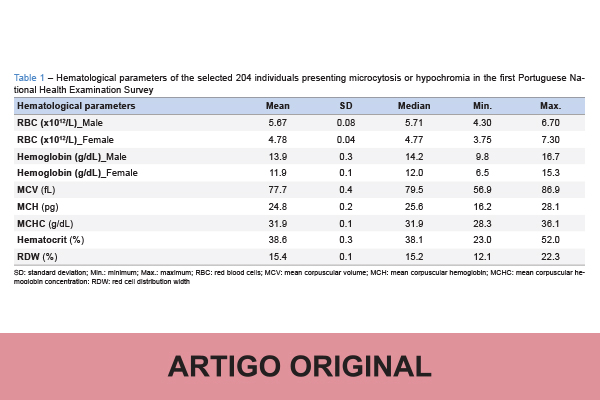SOCIAL MEDIA
Portuguese Medical Association's Scientific Journal

Introduction: Microcytosis and hypochromia result from deficient hemoglobin synthesis in red blood cells and are easily detected in a complete blood count test. These conditions are mainly due to iron nutritional deficiency, but may also result from some genetic diseases, such as thalassemia. The aim of this study was to determine the contribution of β- and α-thalassemia to these abnormal hematological phenotypes in a representative sample of adult individuals living in Portugal who participated in the first Portuguese National Health Examination Survey (INSEF).
Material and Methods: Among the 4808 INSEF participants, 204 had microcytosis, hypochromia or both. The corresponding 204 DNAs were screened for changes in the β-globin gene by next-generation sequencing and Sanger sequencing. In addition, α-thalassemia deletions within the α-globin cluster were investigated by Gap-PCR and multiplex ligation-dependent probe amplification.
Results: In this selected subgroup of INSEF participants, 54 had α-thalassemia (26%), predominantly caused by the -α3.7kb deletion, and 22 were β-thalassemia carriers (11%) mainly due to point mutations in the β-globin gene previously known in Portugal.
Conclusion: Thalassemia trait is a frequent cause of microcytosis or hypochromia in Portugal since this genetic condition was found in 37% of the investigated cases.